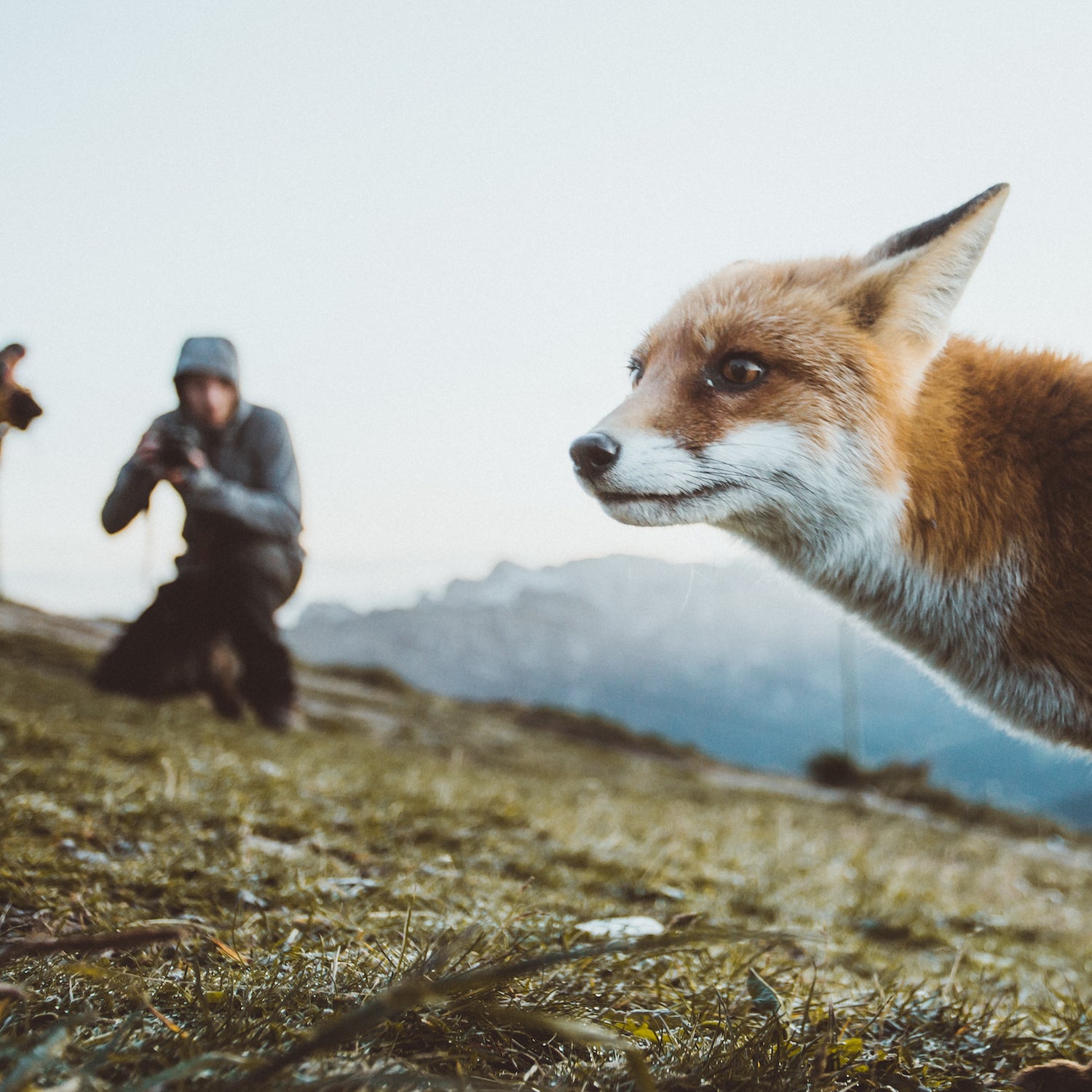Welcome to Tough Love. We’re answering your questions about dating, breakups, and everything in between. Our advice giver is Blair Braverman, dogsled racer and author of and . Have a question of your own? Write to us at toughlove@outsideinc.com.
I have a friend who I go backpacking with, and we live near some popular trails with a significant number of wildlife. Mostly we see deer and smaller animals like porcupines and coyotes, but we also have black bear, and see them regularly. For this reason, we always follow bear precautions, like storing food in bear-proof containers. However, my friend also gets very excited about getting close to wildlife to watch them and take their picture, and I was always taught that you should keep your distance as much as possible and let them just live their own lives without disturbing them. Sometimes his behaviors don’t seem to matter that much, if the animal he’s approaching is a marmot or something small that can just hurry away, but I still worry that he’s bothering or harassing them (I am not worried about our own safety).
When I tried to talk to him about it, he said that I’m being too worried, and that he’s not hurting anyone. He says it’s important for all species to coexist. Things got tense in our conversation, and I ended up backing down and changing the subject because he was defensive. Is there a way to influence his behavior or should I just let this one go?
It would be one thing if your friend lived in a place with no other humans, because, sure, in isolation, his actions would be benign. But instead, he lives in a world where countless other people are encountering the same animals, passing along the same trails, and any individual creature that he meets will run into other humans on a fairly regular basis. If all those humans—or even a few of them—make a habit of getting too close to wildlife, they’re putting the same animals that they claim to care about at risk. (Plus, they’re being annoying; animals have a right to be left alone. They’re not the ones who went on a backpacking trip; they’re the ones who have backpackers tromping through their living room.)
Approaching a marmot is pretty simple; you look at the marmot, the marmot looks at you, it’s all very pleasant, and nobody gets hurt. Meanwhile, the marmot learns that you’re harmless—and that thus, people in general are harmless. What happens if that marmot gets so used to people that a kid is able to approach it, tries to pet it, and gets bit? Ironically, sharing a wilderness area with more people means taking more individual responsibility, not less. You always have to remember that none of the things you do—plucking a flower, taking a shortcut—are happening in isolation.
Each year, in Colorado alone, around because they’ve become “nuisance” bears—which is to say they’ve encroached too far on human property. First offense? The bear is tagged and moved. Second offense? They’re put down. And the more comfortable that an animal becomes around people, the more likely it is to become a “nuisance.” I have a vivid memory of working in suburban Colorado and watching a bear get removed from a car that he’d somehow shut himself in (and, subsequently, absolutely demolished from the inside). It wasn’t the bear’s fault that he’d stumbled into a human neighborhood, or that he’d come to associate cars with food, but he was going to be the one to pay the costs.
The good news is that there are actual guidelines for how to handle animal encounters; you don’t have to determine things on your own. If you’re traveling in a park, you can ask a ranger or check the rules at their visitors’ center, or follow more general guidelines by the ���ǰ� . (And of course, there’s still a possibility that your friend’s behavior is within the guidelines, and that your own precautions are above and beyond. If that’s the case, don’t worry about trying to influence him; just keep your preferred distance from wildlife, and reconnect with him after the encounter.)
If your friend is getting too close, hopefully he’ll be more responsive to hearing that from a neutral and reliable guideline or park employee, rather than just from you. (Not that you’re not reliable, but it’s a lot easier to dismiss a friend as a nag than it is to dismiss an expert organization.) Odds are good that he grumbles a little, or even shrugs things off at first, but that he’ll be better at respecting animals’ space once he’s processed things. If watching wildlife is an important priority for him, he could also follow the National Park Service’s advice and invest in lightweight binoculars or a zoom lens that’ll help him feel closer from a distance. And if he gets defensive or angry, and doubles down? Maybe that’s your cue to take a couple steps back—or to start considering a new backpacking buddy.


